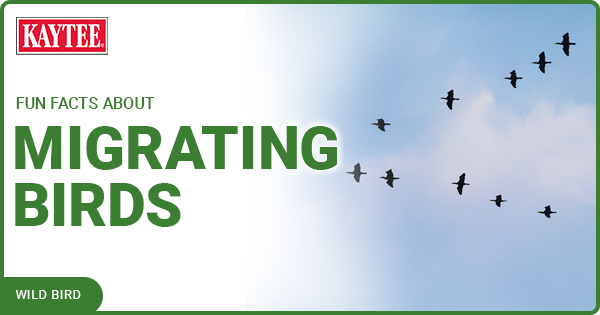Backyard Birding Fall Checklist
In spring, the birds return from their long trips. In fall, they are preparing to leave and migrate to their winter homes. They have mated and taken care of their offspring all spring and summer. Now both the parents and their young adult offspring are gearing up for a long migration to wherever their species goes to get away from the cold and find more readily available resources.
Many birds like cardinals, black-capped chickadees, and woodpeckers, don’t migrate and will survive through the winter with help from full feeders and running water sources. However, other birds like the Baltimore oriole, hummingbirds, grosbeaks, and more are planning their trips south to reach warmer climates. Depending on where you live in the U.S., you might see different residents throughout the year, but remember it is important to always feed the birds you do see with fresh food and water!
As a backyard birder, you’ll see the change in seasons throughout the upcoming fall months and there are some things you can do to help your feathered friends.

Create Brush Piles
Fall is the time of year when you can get a little lazy with your landscaping, for the birds’ sake! Brush piles and leaves provide great ground resources for foraging and coverage from predators. Some winter residents will also be looking for a place to call home during cold months, many of which rely on evergreens or piles of leaves and brush.Take Down Empty Bird Houses
After the spring and summer seasons are over, most bird houses will clear out as babies have left the nest and bird families are migrating for the winter. Remove any empty bird houses, clean them out, and store them until next spring.
Refill Water Daily
In fall, there are some early freezes and remaining hot days. Both of which are critical times when birds need water. Keeping running fountains or bird baths is the best option, but if you have a still bird bath, make sure to keep it full of fresh water for the birds. They will be traveling and making stops along their migration path during which hydration is key to their survival. Clean Feeders More Often
Fall weather can be unpredictable. There’s typically more rain and moisture than in the dryer summer months, so bird seed has the potential to get wet and spoil if not properly managed. Make sure to keep feeders under a rain cover if possible, change out seed after wet or freezing weather, and clean feeders thoroughly weekly with 9 parts water to 1 part bleach. Also, make sure to wash your hands after handling bird supplies.Add More Feeders
Birds are going to be packing in the calories are they prepare their bodies for the long flight. Some have already started their flight and your yard is their resting place. Add more feeders to accommodate these visitors and help them along their journey. Include feeders that hold suet to provide food high in protein and fat for birds to get energy.Squirrel-Proof Feeders
Birds aren’t the only ones who prepare for winter in fall. Squirrels will be gathering their winter supplies and on the prowl for their favorite foods. By squirrel-proofing your feeders, you give birds a better chance at getting at these precious resources before the other critters do!
Watch for Migrating Birds
Look for birds you don’t normally see! Many birds, like cedar waxwings, will travel in groups and make guest appearances for a day at a time. Enjoy some of the brightly-colored birds making their way south to warmer climates, too! Protect Migrating Birds From Your Windows & Pets
Birds encounter many dangers as they travel along their migratory path. You’ll likely have new birds visiting your yard as they pass through that aren’t familiar with the dangers of your yard. Add clings to windows to try to reduce glare and prevent traveling birds from colliding into big windows. Similarly, keep cats inside as groups of birds travel through and visit feeders. The less danger, the better, as birds make their way south.
Now that you have your fall checklist, get started! The birds are looking for a rest stop on their way down south, so make sure your yard is the perfect place to visit! Want to learn more about bird migration? Check out our blog post full of facts about migration.









.png?h=315&iar=0&w=600&hash=9C09A701CB4D5CF9B2C5B7FA2DA01F2E)



